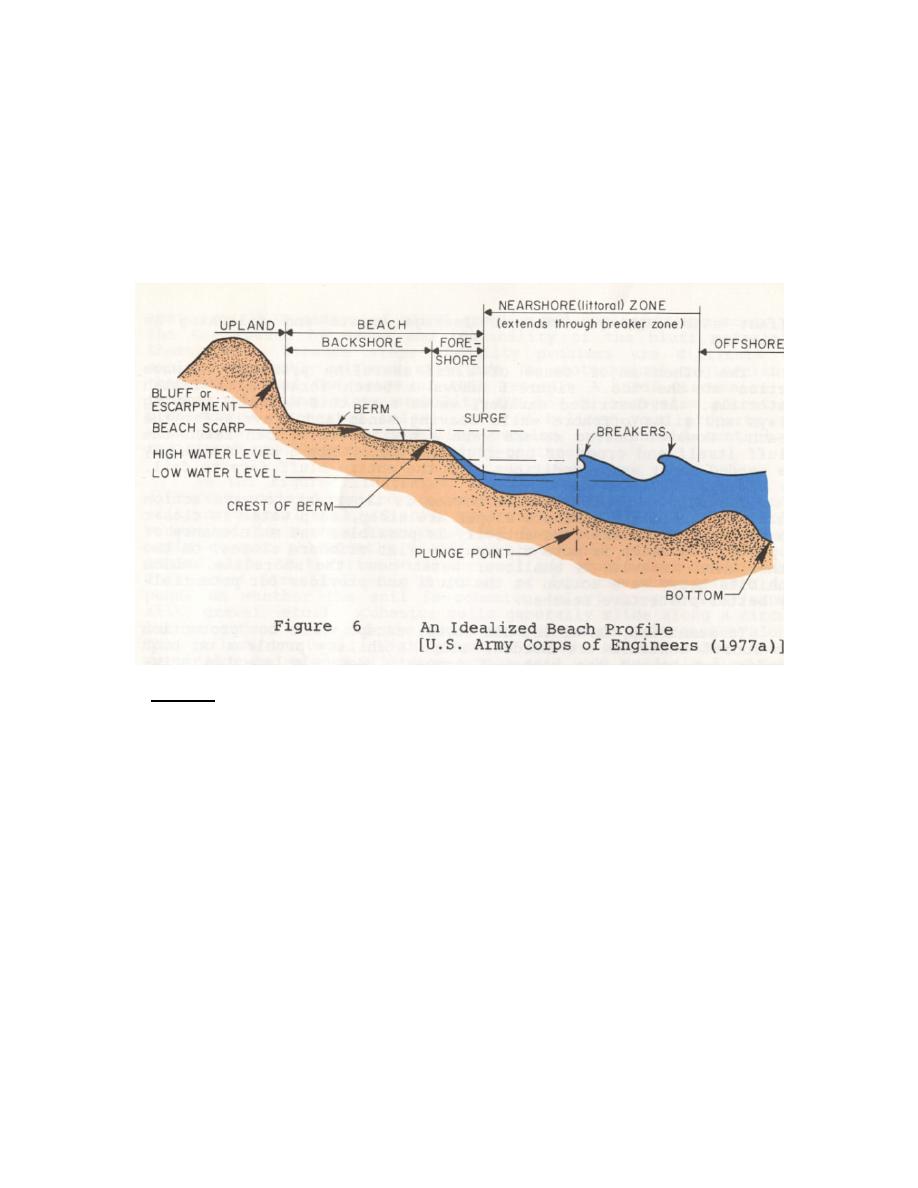
During periods of either increased water levels or wave heights, the sand above low water level is
eroded, carried offshore, and deposited in a bar. Eventually, enough sand collects to effectively decrease
the depths and cause the storm waves to break farther offshore. This reduces the wave action on the
beach and helps re-establish equilibrium. At open coast sites, the process eventually reverses, and long-
period swells again return most of the sand to the beach after storms. At sheltered sites where no
exposure to oceanic swell exists, the recovery of material lost offshore does not occur, and storm-caused
erosion becomes permanent.
Wetlands. Wetlands usually occur in combination with sand beaches or low erodible plains.
Construction in a wetland will generally require a federal, state, and possibly, a local permit (These will
be described later.) Under federal regulations, we lands are defined as:
"Those areas that are inundated or saturated by surface groundwater at a frequency and duration
sufficient to support and that under normal circumstances do support, a prevalence of vegetation
typically adapted for life in saturated so conditions. Wetlands generally include swamps,
marshes, bog and similar areas" [U. S. Arm Corps of Engineers (1977b)]
Marsh plants are primarily herbaceous (lacking woody stems), such as grasses, sedges, and rushes. The
species present depend o location and whether the marsh is low (regularly flooded) or high (irregularly
flooded).
Until recently, marshes were regularly drained and filled for new development or agriculture.
They are now recognized as vita links in the food chain of the aquatic community and for their capacity
to absorb water-borne pollutants. However, more importantly, they provide shore protection by
absorbing the energy o approaching waves and trapping sediment carried along by currents
15




 Previous Page
Previous Page
